| Corcoran Technical Trading Patterns For March 18 |
| By Clive Corcoran |
Published
03/18/2011
|
Currency , Stocks
|
Unrated
|
|
|
|
Corcoran Technical Trading Patterns For March 18
In what has been a tumultuous week for global markets, there is a case to be made that the chart for AUD/JPY captured a lot of the drama as it unfolded in the light of events in Japan and as a reliable indicator of the waxing and waning of short-term macro risk.
The chart below - which I have been showing from time to time for several weeks - shows the crucial failure at the 84.40 level (which is highlighted) and then the plunge down to the 75 level, which exceeded even my ambitious downside target of 77 cited in Tuesday’s newsletter.
During the Asian trading session a coordinated round of central bank intervention, designed to weaken the Japanese yen, succeeded in pushing the rate down towards the 82 level against the USD. Largely as a consequence of this sharp move, the AUD/JPY cross rate is now back to a relatively neutral level around 81.50, and for the time being, while there is intervention I would suggest remaining on the sidelines on this cross rate.
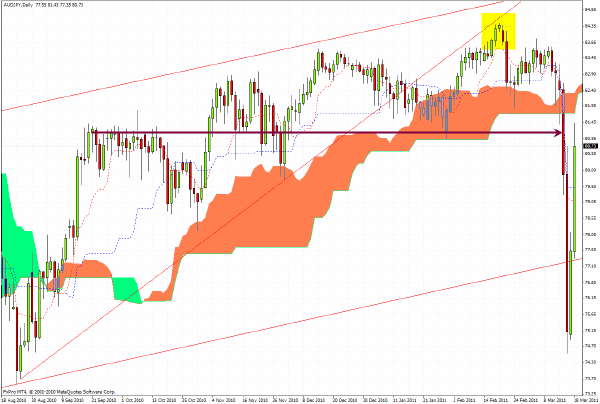
In view of the upward movement today in the euro, I thought it would be useful to repeat my comments from the March 7 newsletter.
My intuition is that the euro may attempt to reach back towards the $1.43 level as last seen in Q4, 2010 and may sit at this level up until the next meeting of the ECB in April. If M. Trichet delivers the 25 bps increase which almost everyone now expects, but softens slightly his language about vigilance, then traders might well take this as the excuse to sell off the EZ currency and take it back down towards a test of the lower boundary of the range. This view is further supported by increasing signs that the Eurozone bond market - especially for the usual suspects - is suffering from a lack of interest from the private sector with the only real support coming from ECB purchases.
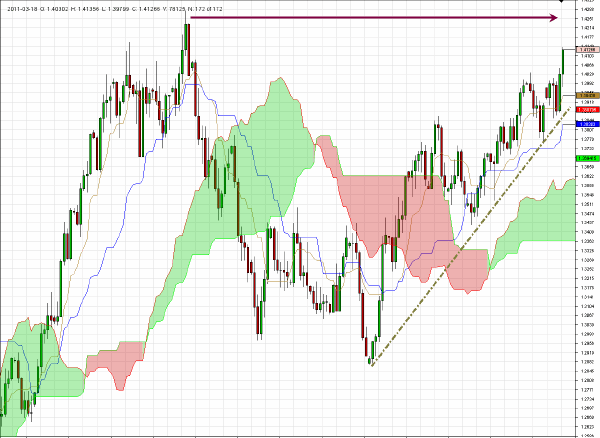
Understandably, most attention with respect to Asian equities this week has been focused on the Nikkei 225, but I also want to draw attention to the rather troubling chart pattern on the Mumbai Sensex index - which closed down 1.5% today and which is now drifting further away from pivotal support at the 18,000 level.
The 50-day EMA has dropped below the 200-day EMA (highlighted in yellow on the chart) and there is a fragile looking triangular formation, which, should it be broken, could bring momentum to the exploration of lower prices for this key index. India is struggling with inflation and the outlook for interest rates and fixed income assets in this territory is acting as a dampener to the appetite for equities.
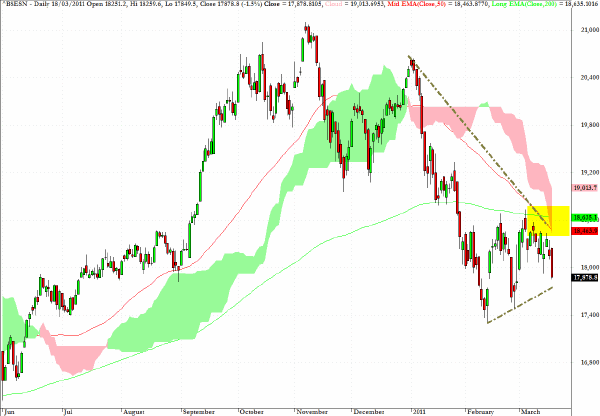
Another technically weak chart in Asia is that for the Hang Seng Index in Hong Kong which has now two closes below its 200-day EMA, as well as violation of two uptrend lines.
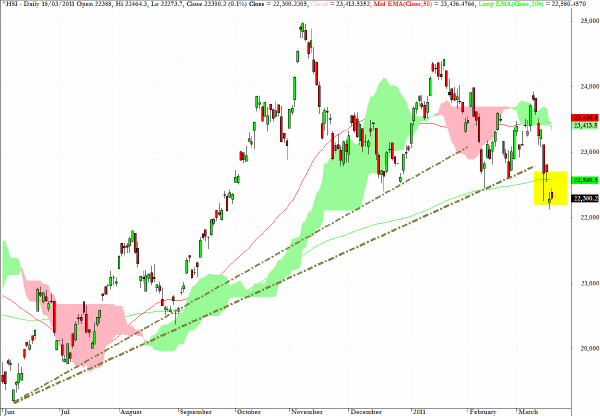
EWH, an exchange traded fund which provides exposure to the Hong Kong market, provides a suitable vehicle on the short side for those concerned about the continuation of tightening by the PBOC and the fact that the Shanghai market is struggling to break back above the 3000 level.
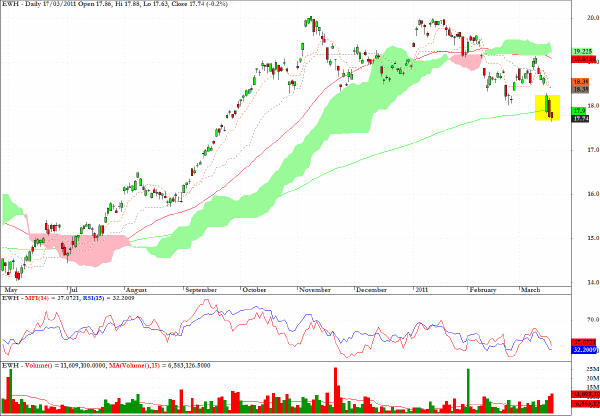
KOL, which provides exposure to assets in equity securities of U.S. and foreign companies principally engaged in the coal industry, has a constructive volume pattern and I would favor the long side.
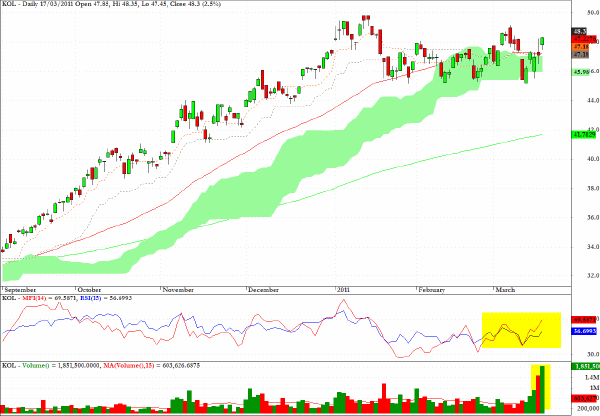
YCS represents a leveraged vehicle which rises on yen weakness. While I am confining myself in my own trading of yen crosses in the spot FX market to short-term opportunistic plays, for those who believe that the intervention efforts instigated today by the BOJ to weaken its currency will prevail, this could be a worthwhile position play in coming sessions.
Be aware, of course, that this ETF should open today on a sizable gap up, and entry points would be more attractive after an initial fade.
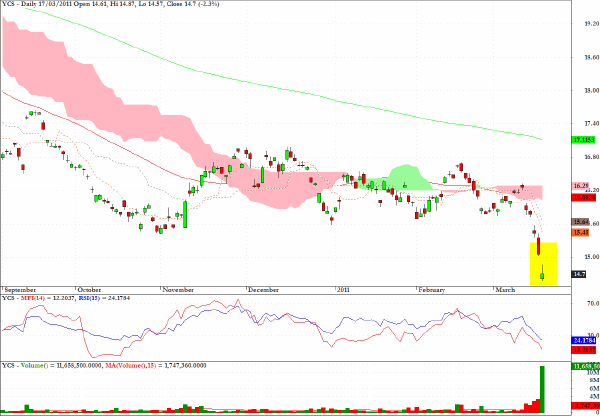
Clive Corcoran is the publisher of TradeWithForm.com, which provides daily analysis and commentary on the US stock market.
|